For many people keeping track of the gas and grocery budget is essential to making their financial weeks work. People may want to make sure there is enough money for gas and groceries before buying other things like clothes or household items.
Gas and grocery expenses seem like recurring budget expenses such as rent or mortgage because they happen on a regular basis but they are very different from these expenses because the amount you spend can change based on what you need and want that particular week. But at the same time it is important to set aside money for these items so you don’t overspend your discretionary funds and not have enough money to eat and go to work. One financial counseling group calls these gas and grocery expenses “variable but important”.
So using Weekly, what is the best way to account for these variable but important expenses?
There are two ways to account for these.
Method 1 – Take them out of your Safe-to-Spend
Weekly is constructed to break up your discretionary spending into a week’s time and to deposit this into a weekly Safe-to-Spend. Breaking up your discretionary spending into a week’s time is small enough to keep things under control and for many this eliminates the need to move money between the Gas and Grocery categories. In other words, the shorter time period makes it reasonable to consider all your expenses and use your Safe-to-Spend to cover them without needing to break down further into individual budgets.
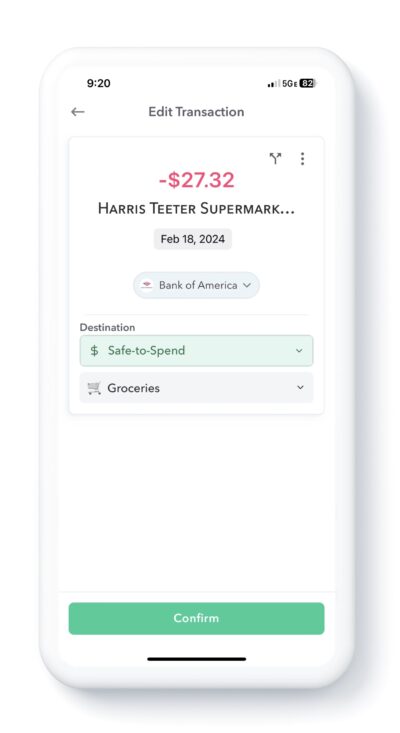
Also, if you use this method and label your gas and grocery expense, your Safe-to-Spend will show you average spending on gas and groceries for the past week so you can use that as a guideline to make sure you are on track.
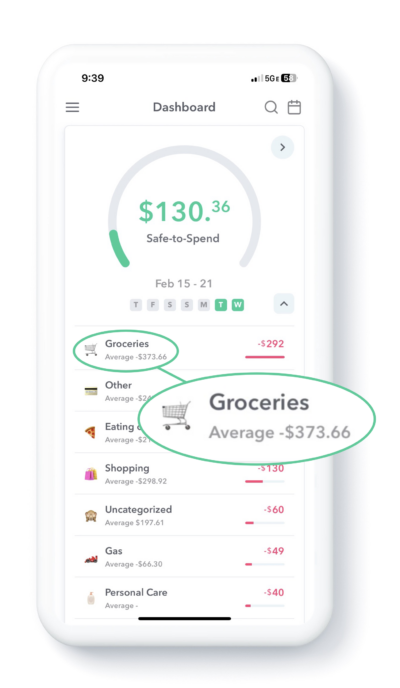
You can also see trends in your grocery and gas spending in the Safe-to-Spend category trends report.
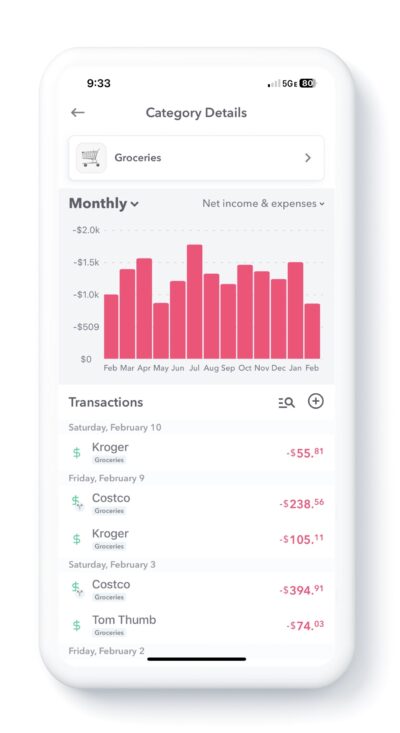
However, this can be nerve-wracking for some because and it kind of requires a bit of mental check when you are glancing at your Safe-to-Spend to make sure you don’t overspend before you have made your grocery or gas run.
Advantage: Less work
Disadvantage: You haven’t set aside money specifically for gas and groceries making it easier to overspend your Safe-to-Spend.
Method 2 – Track Gas and Groceries using Funds
If however, you want to separate out money for groceries or gas, you can do that using Funds. You do this by creating a fund and then setting aside part of your Weekly Spending Limit each week into a Fund rather than going into your Safe-to-Spend or making manual transfers into the fund. You can then track spending for that specific fund. This has the advantage of setting aside money for these important categories, however it does mean you’ll have multiple balances to keep track of (your Safe-to-Spend and any funds you set up) which can make it a little more complicated. But using Funds does ensure you have that amount set aside up front so you don’t accidentally spend it on something else.
For example, let’s say you had a weekly spending limit of $500 and you wanted to set aside $150 of that $500 for groceries inside a Groceries fund.
First, you’d create a Groceries fund. When creating the fund you can choose to have $150 automatically contributed to your Fund each week or you could choose to manually transfer money into the Fund by doing a Transfer transaction.
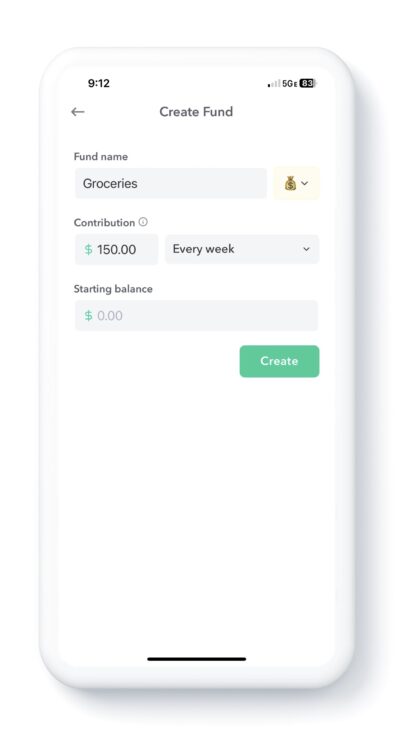 |
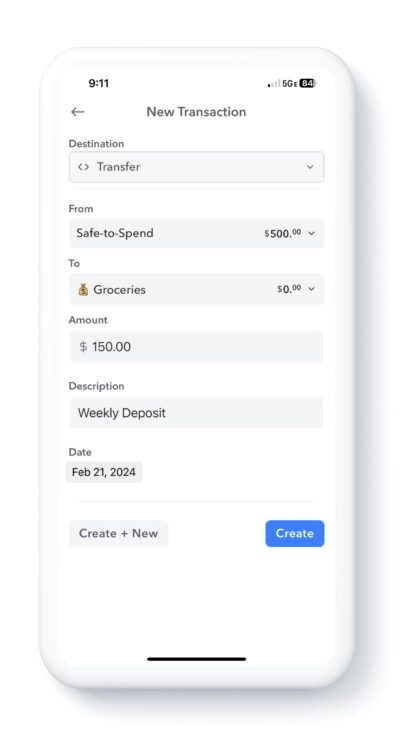 |
| You can set up automatic contributions to a fund when you create the fund. | Or you can manual transfer money into a fund. |
If you choose to manually transfer money, once you create the fund you will want to add a transfer transaction to move money into the Fund. If you choose to automatically transfer money then Weekly will do this for you for the first week or all subsequent weeks.
Once the money is transferred then this would lower your Safe-to-Spend to $350.
Then when you spend money at the grocery store, you would account for those transactions by assigning the destination for those expenses to the Groceries Fund you setup.
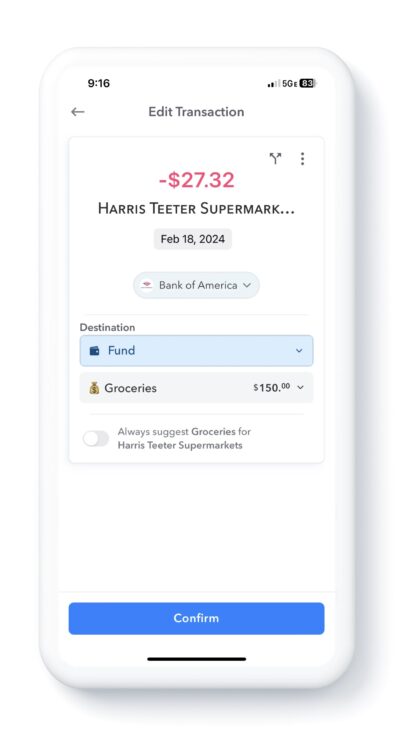
At the end of the week, if you had money left over in your “Groceries” fund you could choose to do nothing and keep a positive balance or you could manual transfer your ending balance to another Fund or back to Safe-to-Spend to rollover into the next week.
If you had set up your Fund to automatically contribute to it, when the next week starts you will get another $150 in the Fund. If you don’t have automatic transfers setup, you will want to make another manual transfer.
If you end up spending more for Groceries than you have in your Fund, you may want to make zero out the balance by either manually transferring money from your Safe-to-Spend to your fund or by waiting for the additional deposit into the Fund the next week if you have setup automatic deposits.
Use Fund Trends report to track spending on Gas and Groceries by tapping on the left side navigation and then on your Grocery fund.
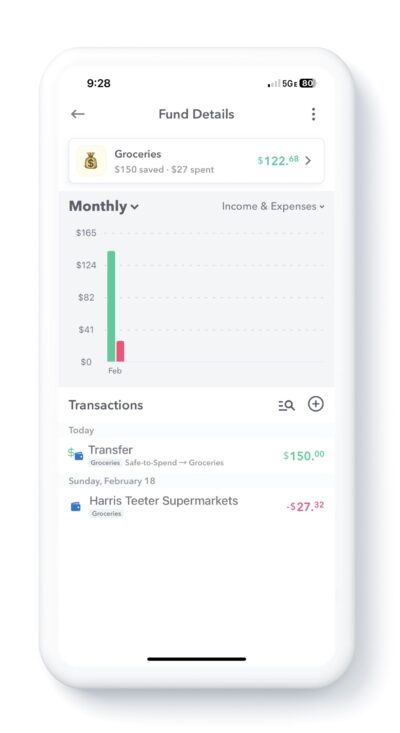
Advantage: Keeps track of Gas and Groceries separately
Disadvantage: May require more maintenance moving money between Funds and Safe-to-Spend
Conclusion
Gas and Grocery spending is an important part of everyone’s budget. Using Weekly you have two options to keep track of this spending and depending on your level of comfort. The first is to take all these expenses from your Safe-to-Spend since a week’s time frame is short enough to keep your spending under control or you can set aside part of your Weekly Spending Limit into a Fund and track it separately to insure that the money is set aside.
